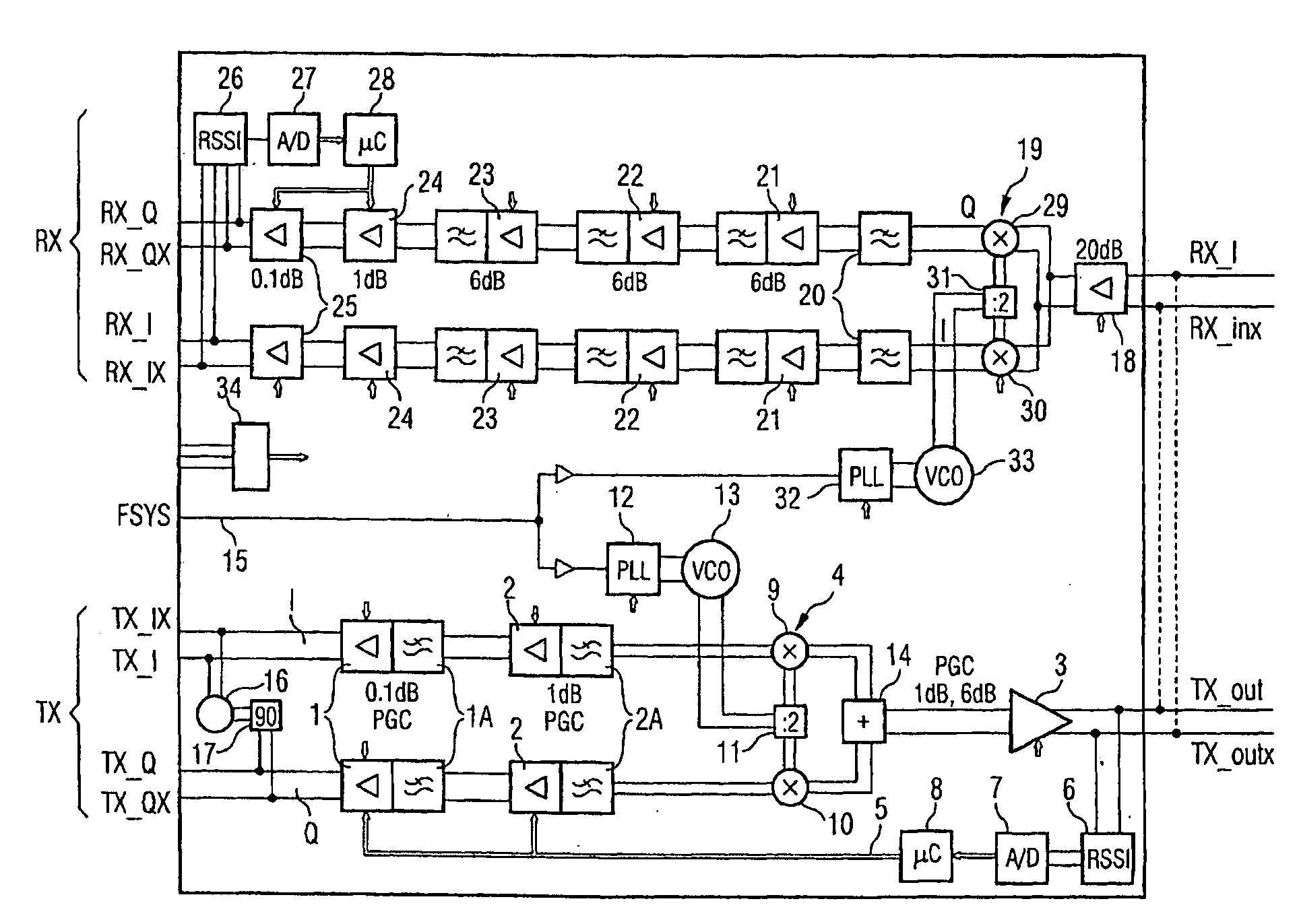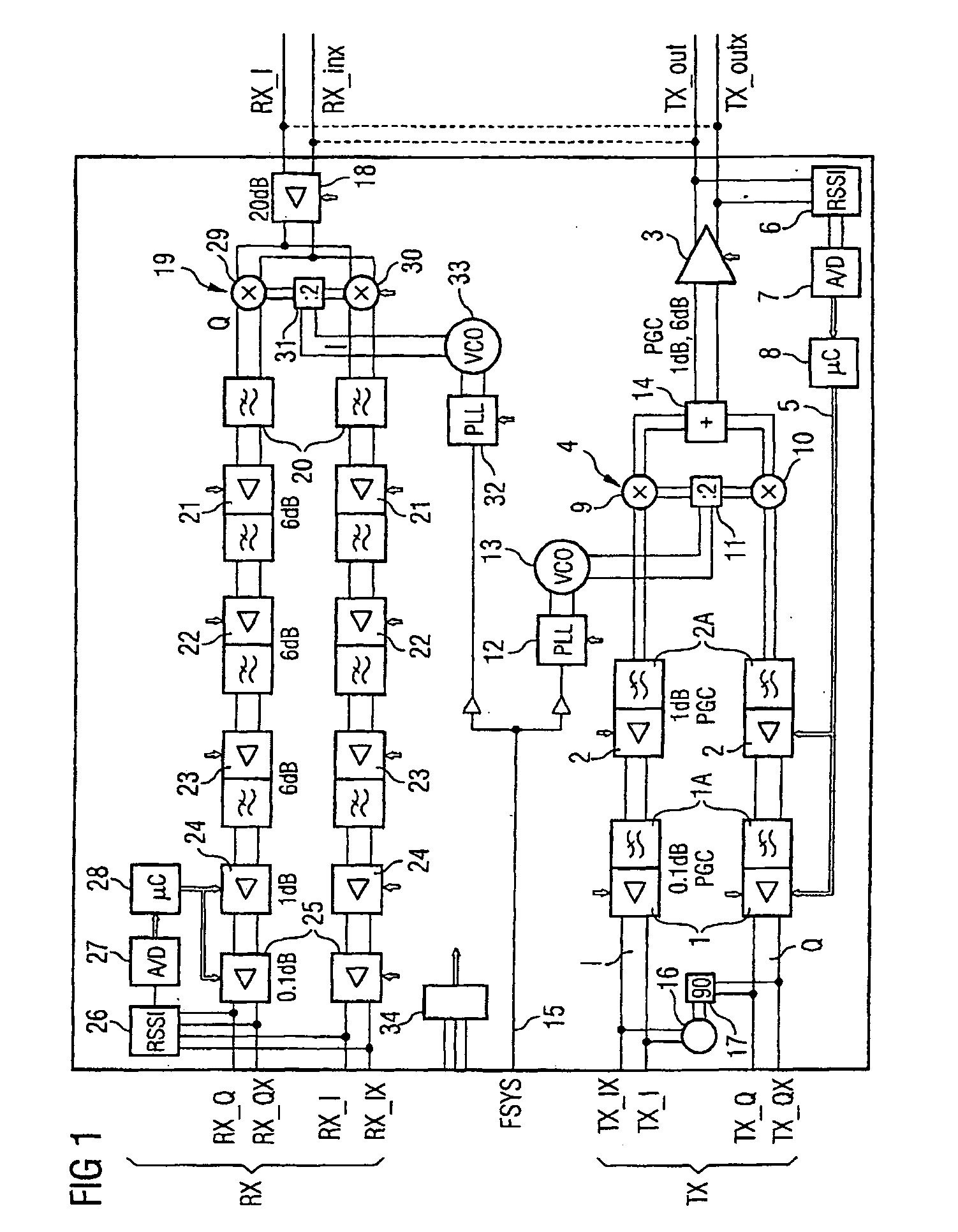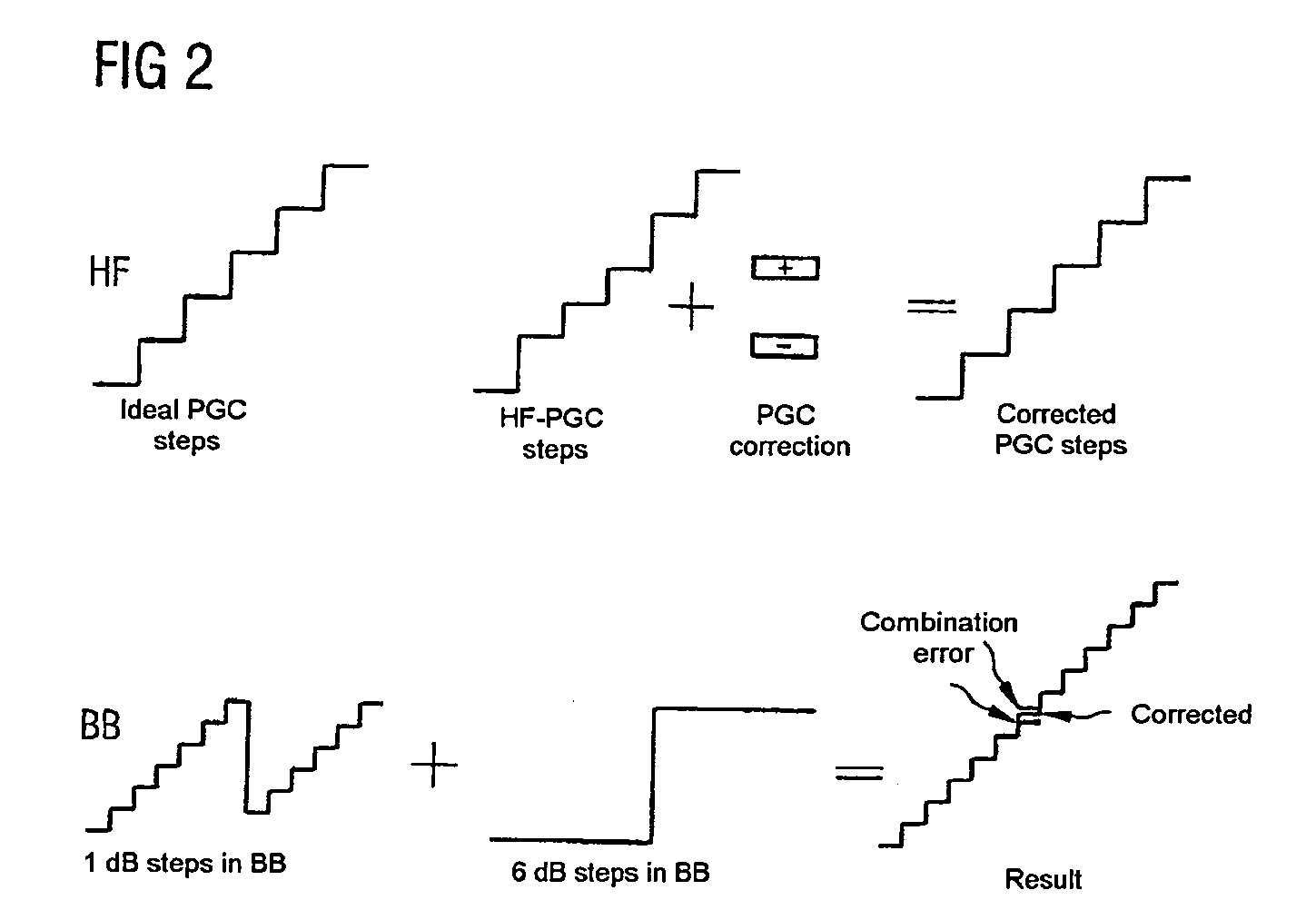Amplifier arrangement and method for calibrating an amplifier arrangement
- Summary
- Abstract
- Description
- Claims
- Application Information
AI Technical Summary
Benefits of technology
Problems solved by technology
Method used
Image
Examples
Embodiment Construction
[0048]FIG. 1 shows an amplifier arrangement 1, 2, 3, 5 in accordance with the present invention both in the transmission path Tx and in the reception path Rx of a mobile radio transceiver. In the transmission path Tx, the amplifier arrangement 1, 2, 3, 5 comprises a programmable amplifier 1, a programmable amplifier 2 and a programmable amplifier 3. The programmable amplifier 1 is provided both in the inphase path I and in the quadrature path Q of the baseband signal processing chain. On the output side, the programmable amplifier 1 comprises a respective low-pass filter 1A. The programmable amplifier 1 has a further programmable amplifier 2 arranged downstream of it, likewise respectively split into the inphase and quadrature paths I, Q.
[0049] The programmable amplifier 2 likewise comprises a respective low-pass filter 2A on the output side. The outputs of the programmable amplifiers 2 have an upward frequency converter 4 connected to them which results in frequency conversion fro...
PUM
 Login to View More
Login to View More Abstract
Description
Claims
Application Information
 Login to View More
Login to View More - R&D
- Intellectual Property
- Life Sciences
- Materials
- Tech Scout
- Unparalleled Data Quality
- Higher Quality Content
- 60% Fewer Hallucinations
Browse by: Latest US Patents, China's latest patents, Technical Efficacy Thesaurus, Application Domain, Technology Topic, Popular Technical Reports.
© 2025 PatSnap. All rights reserved.Legal|Privacy policy|Modern Slavery Act Transparency Statement|Sitemap|About US| Contact US: help@patsnap.com



